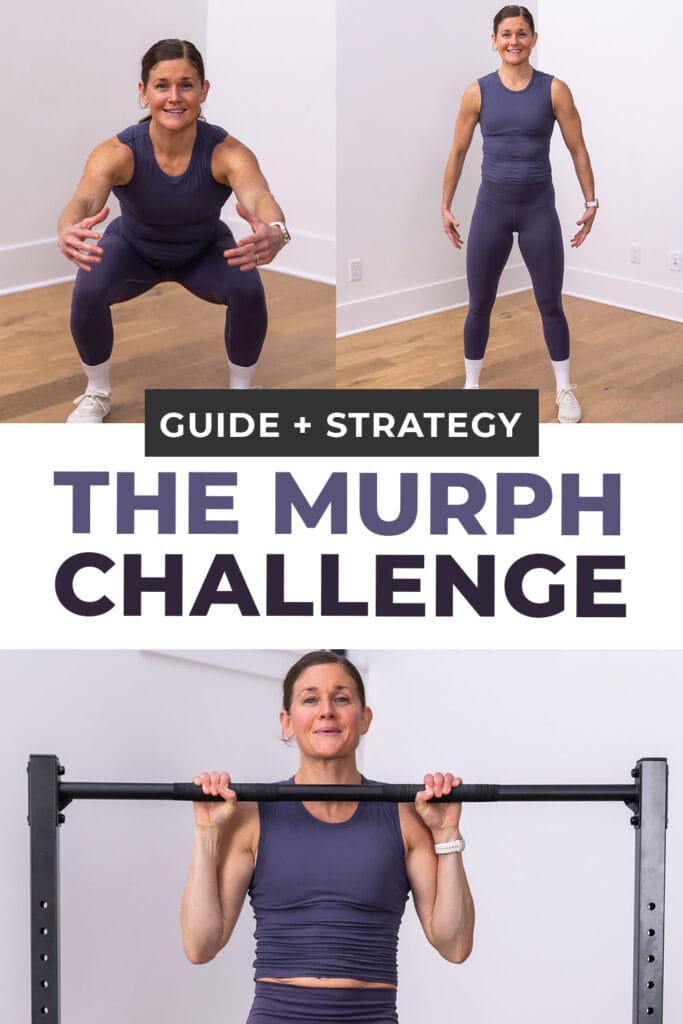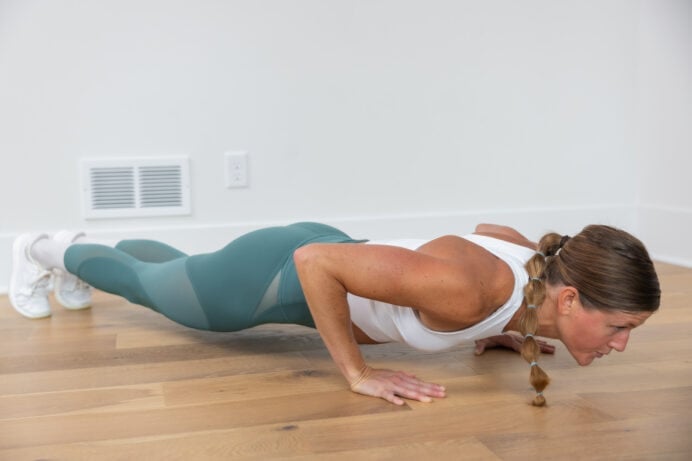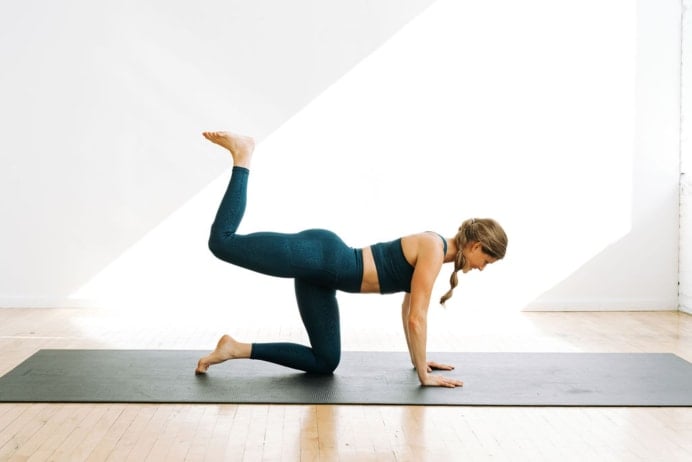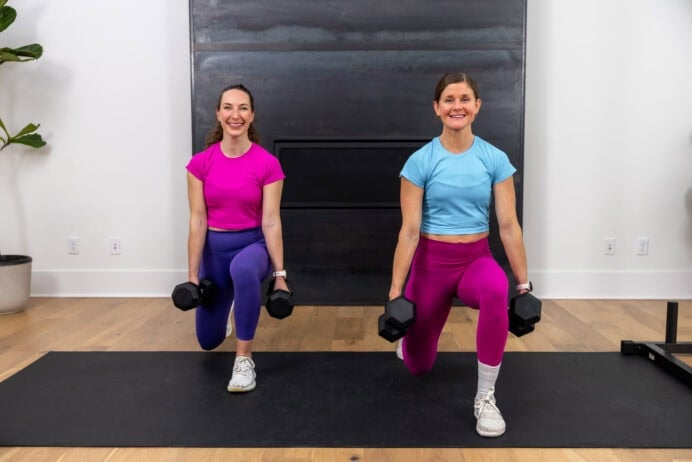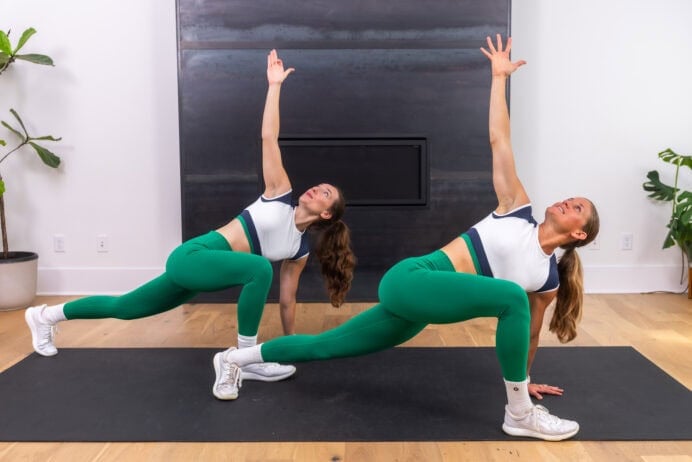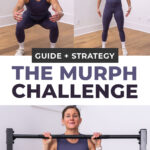
The Murph Workout: What It Is and How to Do It
The “Murph” is the most popular and well-known CrossFit WOD (workout of the day), attempted by thousands of people over Memorial Day every year. This workout is an intense and challenging test not just of physical strength, but also mental fortitude and endurance.
I personally committed to completing a Murph this year — here’s everything you need to know about training for your first Murph.
Before You Begin
I’ve been a personal trainer for over a decade, run multiple marathons (and dozens of half-marathons), and birthed three humans, and I still was incredibly nervous to set a goal of completing a “Murph” this year.
The Murph is an extremely challenging CrossFit Hero Workout or “Hero WOD” (workout of the day) created to honor Lieutenant Michael P. Murphy, a U.S. Navy SEAL who was killed in action in Afghanistan on June 28th, 2005.
The Murph Challenge is an intense test of both physical strength and mental endurance. It’s a challenging and effective workout, but more importantly, it’s a way to honor Lt. Murphy and other service members who have lost their lives.
To “Rx” the Murph (or perform it as prescribed, or as written), participants start with a 1-mile run, followed by 100 pullups, 200 pushups, 300 squats, and ending with another 1-mile run. If you have a weighted vest available, it’s recommended you wear one for an extra challenge.
Although it’s intense, it doesn’t actually take long to complete a Murph.
This challenge is typically completed for time, with the goal of finishing as quickly as possible. A “good” Murph time depends on your fitness level and whether modifications are being taken, but the CrossFit standard for the Murph as written is between 36 and 46 minutes.
There are ways you can scale a Murph to make it more accessible, but the Murph isn’t a workout challenge I would recommend to beginners or during pregnancy and postpartum (try this pregnancy workout instead!). A Murph is extremely physically demanding, and poses risks of rhabdomyolysis (rhabdo) and heat-related illnesses if not approached with caution.
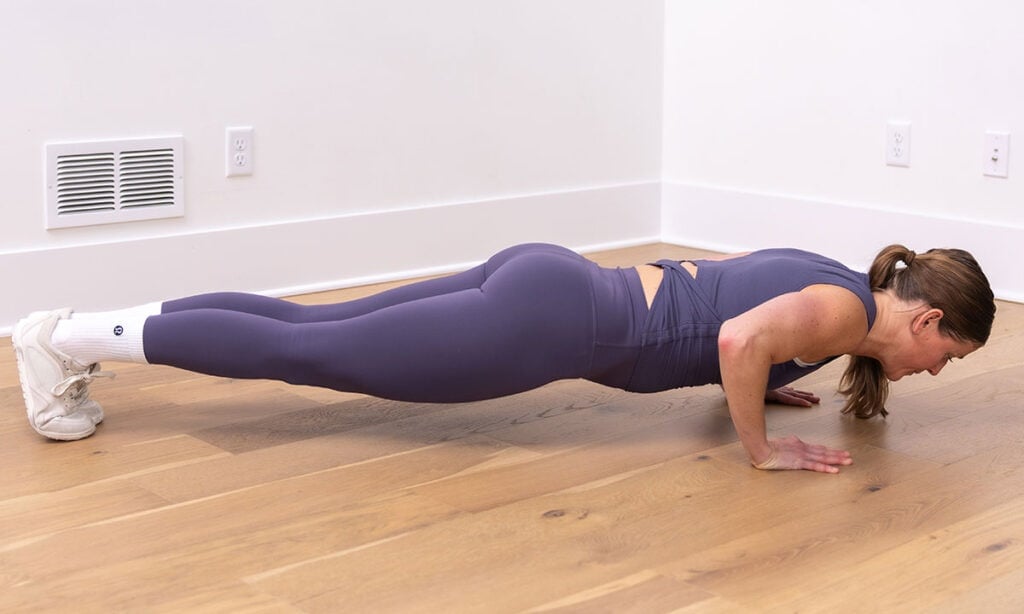
The Murph Challenge
The workout that is now known as simply the “Murph” began as one of Lt. Murphy’s favorite workouts, which he called “Body Armor”. This workout was designed to be performed wearing a 20 lb weighted vest or body armor if you have it available.
The Murph Challenge is the official annual fundraiser for the Lt. Michael P. Murphy Memorial Scholarship Foundation. Participants all over the world register and compete to pay tribute to Lieutenant Murphy and all those who have given their lives in service.
Many CrossFit gyms and members of the CrossFit community will also program the Murph as their WOD over Memorial Day to honor those who have served.
Standard Murph Workout (Unpartitioned)
As written, the Murph workout sandwiches pull-ups, push-ups and air squats between (2) 1-mile runs.
To perform the Murph “strictly”, you would perform all the reps of one exercise before moving on to the next movement:
Partitioned Murph Workout
Most people partition (or break down) the reps into smaller, more manageable chunks. This is how I personally approached training for the Murph.
Although there is some debate online, the official CrossFit website clearly states that partitioning the pull-ups, push-ups, and squats is allowed and counts as “Rx” (or “Rx’d”), or completing the workout as prescribed.
A common strategy is to start and end with a 1-mile run, and break the total strength reps into 20 rounds of:
1. One-Mile Run
Targets: Cardiovascular endurance, quadriceps, hamstrings, glutes and calves.
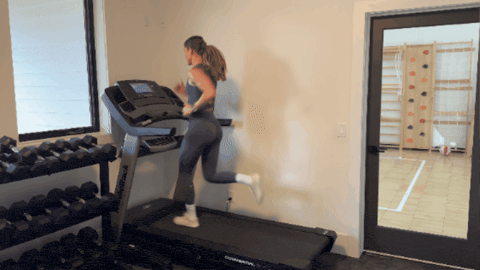
How to Train for a Mile Run
- Start with run-walk intervals. For example, you may start by running/jogging for 30 seconds, then walking for 30 seconds. Repeat this pattern until you run a mile. As you build cardiovascular endurance, gradually increase your running time while decreasing walking time. Continue increasing your running time until you are able to run for the entirety of the mile.
- Focus on cross-training. In addition to adding short and medium-distance runs to your training routine, I recommend following a strength training for runners workout plan that incorporates core, upper body and lower body exercises.
Common Mistakes: One of the most common mistakes made during the Murph is starting off the run portion too fast. You need to pace yourself to maintain energy for the rest of the workout, so don’t try to PR on your first mile.
Modification: If running hurts your knees, you can substitute jump rope, rowing or cycling.
2. 100 Pull-Ups
Targets: Latissimus dorsi (lats), biceps, rhomboids, trapezius (traps), deltoids (shoulders), forearms and core.
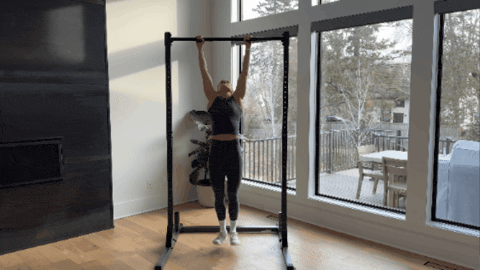
How to Do a Pull-Up
- Reach up and grip the pull-up bar with your palms facing away from your body (overhand grip), hands slightly wider than shoulder-width distance apart.
- Hang from the bar: Allow your body to hang freely with your arms fully extended.
- Perform the pull-up: Initiate the pull-up by squeezing your shoulder blades together and pulling your chest towards the bar. Keep your elbows pointed downward throughout the movement.
- Complete the pull-up: Continue to pull your body, pulling your chest up until your chin is above the bar, or as high as you can comfortably go. Keep your core engaged and your body straight throughout the movement.
- Lower yourself down: Slowly lower yourself back down to the starting position, extending your arms fully to return to the starting position.
Common Mistakes: Instead of thinking “chin over bar,” think “elbows to hips.” This encourages proper muscle engagement and prevents excess straining or swinging.
Modifications: If you can’t do a pull-up, start by performing assisted pull-ups with a resistance band. Then, increase max pull-up reps by following a pull-up progression program. You could also substitute ring rows for pull-ups.
3. 200 Push-Ups
Targets: Chest, shoulders, triceps, back, abs and core muscles.
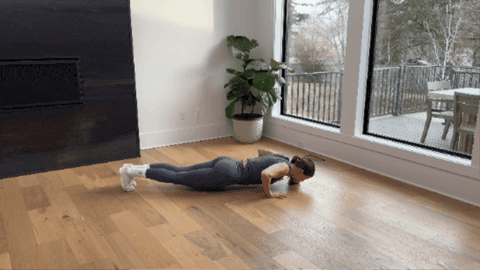
How to Do a Push-Up
- Start in a high plank position with your shoulders stacked over your wrists, weight evenly distributed amongst all 10 fingers. Pull your kneecaps up towards your belly, feet hip-width apart. Option to place your hands on weights if you have wrist pain.
- Hold this plank position, maintaining a straight line with your body, gaze slightly in front of you.
- Slowly lower your chest down towards the ground as your elbows fall back towards your hips (not out to the sides).
- Once at the bottom of your push-up, exhale as you push back up into a high plank position.
Common Mistakes: Try tucking your elbows in slightly (about a 45 degree angle) rather than straight out (90-degree angle) to protect your shoulder joint. If you look at your body from above, your elbows should form an “A” shape, not a “T” shape.
Modifications: If you can’t do a push-up on your toes, start by placing your hands on an incline, or choosing one of these push-up modifications. Then, increase max push-up reps by following a push-up progression program.
4. 300 Squats
Targets: Legs, glutes, quads, hamstrings, hip flexors and core.

How to Do an Air Squat or Squat
- Stand with your feet shoulder-width apart, shoulders stacked over hips, and knees slightly bent. Think about engaging your core and keeping your spine neutral.
- Lower into a squat by sitting your hips back (as if sitting in a chair). Lower until your thighs are parallel to the floor, 90-degree bends in both knees.
- Drive through your heels to stand tall, completing one rep.
Common Mistakes: Don’t allow your knees to collapse in – instead, focusing on pressing your knees out towards your pinky toes.
Modifications: Consider doing box squats or shallower squats to reduce intensity. Alternatively, if squats don’t feel good, substitute these lunge and squat alternatives.
FAQs
Before attempting a Murph, build a solid strength foundation and increase your endurance through cardio and HIIT training. During the Murph, practice smart strategies (like pacing yourself early on and partitioning the workout) to avoid extended rest time later in the workout.
To complete the Murph most efficiently, most people recommend following the 5/10/15 strategy, which breaks your reps into 20 rounds of 5 pull-ups, 10 push-ups and 15 squats. This way of partitioning your reps keeps the pull-ups and push-ups more manageable, preventing burnout.
To train for a Murph, I focused on cross-training while increasing my bodyweight fitness capacity by adding bodyweight squats, push-ups and pull-ups to my daily workouts. For me personally, the Murph’s biggest challenge is the endurance required to complete all the reps. In order to start conditioning my body for the challenge, I added more high volume workouts (like this squat workout that includes over 200 squats) and high-intensity workouts (like this 25-Minute Endurance Training Pyramid) to my workout plan.
You’ve Got This
The Murph is a brutal test of physical strength and mental grit. This isn’t the type of CrossFit workout you should do weekly or even monthly — instead, save it for Memorial Day and use it as a way to track progress year-over-year.
You don’t need to compete in the Crossfit games, finish the Murph in under 40 minutes, or PR on your reps to be successful. Take your time, take modifications as needed, and scale the total reps to fit your current fitness level.
The most important thing to remember is that this challenge is truly about honoring the sacrifice of those who have served. If you do that, you’ve successfully completed a Murph.
More Workouts
Strength TrainingPin This Murph Workout
